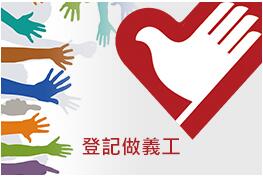About Rare DiseasesRare Disease Wiki

Non-infectious non-anterior (NINA) Uveitis
Name of disease:
Non-infectious non-anterior (NINA) UveitisICD-10 diagnosis code:
No single code because NINA uveitis is a group of diseases.Causes:
NINA uveitis is a group of autoimmune diseases: some affect the eye only, whilst others may be associated with diseases which affect other parts of the body, like sarcoidosis or Vogt-Koyanagi Harada disease.Pattern of inheritance:
Uveitis is not inherited. However as with most traits, if immediate family members are affected, there is an increased likelihood of suffering from it.
Prevalence:
All types of uveitis: 75-204/100,000 persons based on population-based studies.[1] Up to 90% of them are anterior uveitis, so non-anterior uveitis consists of only 10% of all uveitis cases, and NINA uveitis even less than that. [1]
Diagnosis:
The diagnosis of uveitis is based on thorough clinical eye examination by an ophthalmologist using special tools to look at the front and back of the eyes after pupil dilatation. Sometimes additional tests are required, e.g. blood tests and X rays, to rule out infectious diseases and systemic autoimmune diseases.
Age of onset:
Usually 20-50, but can also affect children and older adults.Common signs and symptoms:
Eye redness Blurred or cloudy vision A smaller or bigger pupil in affected eye Pain in the eye Increased sensitivity to light (photophobia) Dark floating spots in the vision
Available treatments (medicinal and non-medicinal):
Whilst anterior uveitis can usually be treated with steroid eye drops, NINA uveitis usually requires oral medications, like oral steroids. High dose oral steroids can have many side effects if taken for a long time, so other immunosuppressants (like those used to prevent transplant rejection or even for cancer treatment) may be used instead of high dose steroids. In severe cases, biologic agents (injections) may also be used. If only one eye is affected, another treatment option is injection of steroid into or around the eyes. Cataract and glaucoma are common complications of NINA uveitis and patients may require surgery to tackle these.
Disease management tips:
Early detection and treatment of uveitis is important in order to reduce the risk of permanent vision loss. Careful follow-up for potential complications of the disease and treatment. Regular blood tests are required if oral immunosuppressants used. Follow the ophthalmologist’s advice and avoid stopping treatment abruptly.
Reference:
1. Review on the worldwide epidemiology of uveitis. Miserocchi E, Fogliato G, Modorati G, Bandello F. Eur J Ophthalmol. 2013 Sep-Oct;23(5):705-17.2. NORD: Posterior Uveitis 3. Orphanet: Uveitis
Other useful websites:
More about the disease:Uveitis Fellows Patient Organization (HK)https://www.uveitisfellows.org/what-is-uveitis Moorfields Eye Hospital NHS Foundation Trust (UK)https://www.moorfields.nhs.uk/condition/uveitis Lions Eye Institute (AU)https://www.lei.org.au/services/eye-health-information/uveitis/ Patient groups: Uveitis Fellows Patient Organization (HK)https://www.uveitisfellows.org/about-us The Ocular Immunology and Uveitis Foundation(US)https://uveitis.org/patients/support/
Acknowledgment:
RDHK gratefully acknowledges Dr. Carmen Chan (Specialist in Ophthalmology) for her assistance in the preparation of this page.



